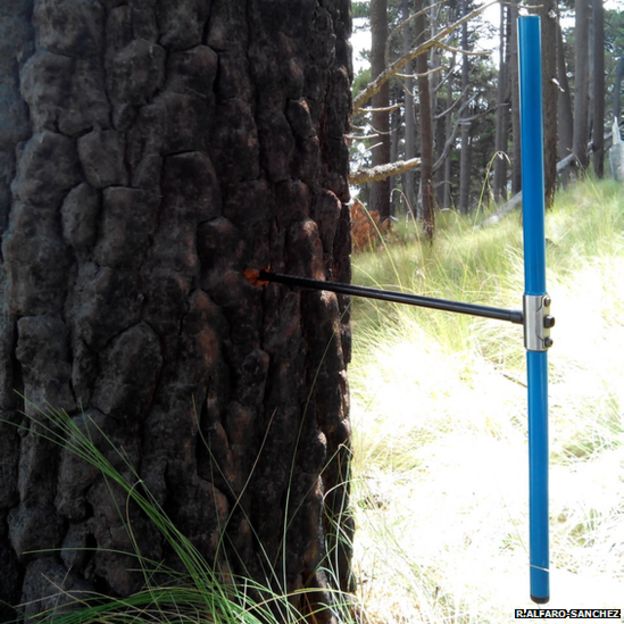Mexico City (April 24, 2020) BBC.- Trees growing near to Popocatepetl active volcano face an uncertain future for several years after an eruption, a study has suggested.
A reduced ability to absorb essential nutrients from the soil and lower rates of turning sunshine into sugar hampered the trees’ growth.
A team of researchers also found that toxins released by eruptions continued to limit the trees’ growth.
The findings appear in the journal Dendrochronologia.
The team said that the widespread impact of volcanic eruptions on trees had been well documented, such as the “year without a summer” in 1816, following the massive Tambora eruption in Indonesia in the previous year, which was deemed to be the biggest volcanic eruption in human history.
However, they added, there was little known about the effect eruptions had on surviving trees near to volcanoes.
Danger depletes data
Certain things had been observed, such as damage to the tree’s branches, dust covering the foliage reducing the trees ability to photosynthesise and grow.
But few studies had been carried out and meaningful data collated.
The team of Spanish and Mexican scientists decided to assess the effects of eruptions on a volcano in central Mexico, which had become active again at the turn of the millennium.
The mount, called Popocatepetl (which translates as Smoking Mountain), is about 70km south-east of Mexico City. It’s the country’s second highest peak.

“We selected a study area with living trees growing at the upper forest limit of the Popocatepetl, approximately 4,000 metres above sea-level,” explained co-author Raquel Alfaro-Sanchez.
“For this study, we focused on the response of the trees to the largest eruption recorded since the volcano resumed its eruptive activities in 1994. This occurred in December 2000.”
During the decade following the resumption of eruptions in 1994, tree ring samples showed the team that the trees had experienced reduced effectiveness of pores on the leaves (stomata) as well as reduce photosynthetic activity as a “consequence of reduced light intensity [as a result of] the large dust layer covering the study area”.
Dr Alfaro-Sanchez added the samples revealed something else: “Immediately after the December 2000 eruption, and compared with the pre-eruptive period (1989-1993), we detected an increase in the concentration of some metal elements.”
A large reduction in growth was also recorded in 2003, three years after the large eruption of 2000, she told BBC News.
“This sharp reduction of growth was probably caused by the negative effect of the two years of reduced photosynthetic capacity and the increase in concentration of potentially toxic elements, such as aluminium, lead and rubidium,” she said.
Uncertain future
Hartweg pines (Pinus hartwegii) are native to the mountains of central Mexico, and are a high altitude specialist, able to grow and thrive at 2,500-4,300 metres above seal-level.
It was this species that dominated the study area.
“This species is adapted to low temperatures and water availability,” Dr Alfaro-Sanchez explained.
“It is also adapted to deal with frequent low intensity fires. Some of the adaptations to fires are a thick bark and a high recovery from crown scorching.”
Yet while the species had been ideally placed to recolonise the area following an eruption, she sounded a note of caution.
“An increase in the volcanic activity (including very frequent fires) together with an increase in drought events as a result of climate change could favour grass species to the detriment of the pine,” she said.
Dr Alfaro-Sanchez described the volcano as one of the most astonishing places she had worked.
“The contrast of colours between the ashen-grey soils and the snow and the vegetation was outstanding. I always had an eye on the volcano; when there were no clouds it had a visible ash plume above the crater and, occasionally, you could hear low intensity explosions,” she recalled.
“It was totally safe but I still found it pretty unsettling.”
Since the study was carried out, the volcanic activity on the smoky mountain has increased and it is now no longer safe for scientists to return to the study area.
Source: BBC


